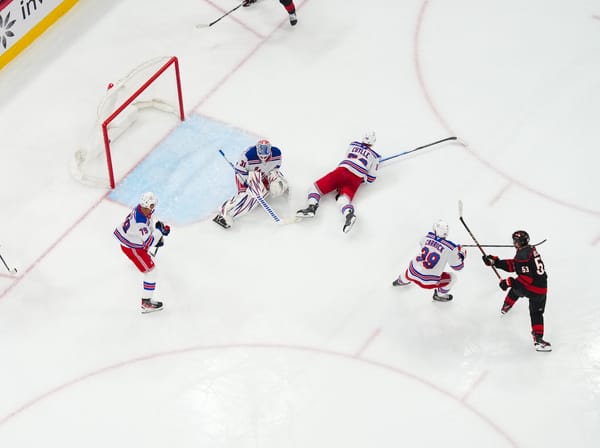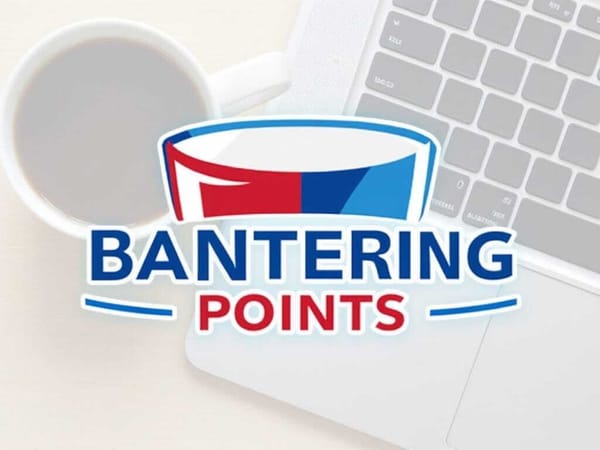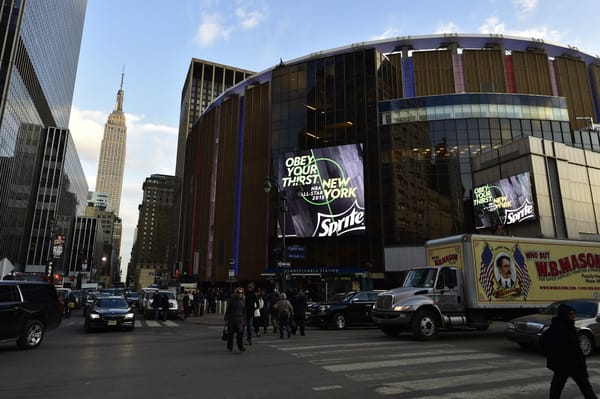Demotion of DeAngelo Exemplifies Rangers’ Bewildering Asset Management
Tony DeAngelo has played eight of the ten games thus far in the 2017-18 season in a New York Rangers’ sweater; he’s been a healthy scratch twice and relegated to the role of the seventh defensemen three times. And yesterday, he was sent down to their AHL affiliate, the Hartford Wolfpack. That’s an interesting way to welcome the only NHL-ready piece of the trade that sent Derek Stepan and Antti Raanta to the Arizona Coyotes, right?
DeAngelo, along with the 2017 seventh overall draft pick were traded to New York in exchange for Stepan and Raanta early in the offseason. With that draft pick, the Rangers selected Lias Andersson, who made a strong impression in preseason, but ultimately returned to Frolunda in the Swedish Hockey League to start the year, making DeAngelo the only NHL-ready piece from the trade to help this team’s chances right now.
General manager Jeff Gorton cited this trade as a part of the Rangers “rebuild on the fly.” After years of trading away draft picks and prospects, the Rangers had no choice but to replenish their assets for the future. Trading two player that had an impact on the Rangers’ Stanley Cup contention right now was risky, but the upside of DeAngelo now and in the future, along with the potential of their early draft pick in the future, clearly made this a worthwhile exchange in Gorton’s eyes.
Focusing just on the return, specifically the potential contributions of DeAngelo, and not even scratching the surface on how the center depth is still lacking after the loss of Stepan, there’s some questions as to why he was the Rangers’ target on Arizona. If the Rangers felt this move was imperative to their future and their status as Stanley Cup contenders in front of Henrik Lundqvist, then ideally, their return would be a young, NHL-caliber player. And at the time of this transaction, the Rangers’ biggest weakness was their defense, so acquiring a young defenseman made sense.
But why DeAngelo?
Was the price for Jakob Chychrun too steep, so they set their sights on DeAngelo? Or was DeAngelo the target all along?
The fact of the matter is, they invested a lot in their return, losing an integral piece of their core and a backup goaltender ready to take over the starter’s net to acquire both DeAngelo and the seventh overall pick. A team that’s still in playoff contention doesn’t lose two right-now pieces without a return that can help them this season, unless there was another transaction pending.
So why isn’t DeAngelo being utilized?
DeAngelo is obviously more than just the return for Stepan and Raanta, and can’t be referred to as such forever. But for right now he certainly can be, especially when there are still gaping holes in the lineup because of that trade, and, as it stands, neither part of the return is on the NHL roster right now.
There were risks to acquiring DeAngelo, as his discipline has been in an issue in the past. However, it was a risk Gorton was clearly willing to take on due to his offensive upside. He’s a right-handed, puck-moving defenseman that could help elevate the power play. His defensive game could use some refinements, but that was something that was clear before making this trade, and it’s something that should improve with the right direction from his coaches.
Unfortunately, since joining the Rangers, his ice time has dwindled, and it doesn’t even look as if the coaches are actively looking to enhance that aspect of his game. After having a role in the first game on the third-pair, a costly turnover against the Toronto Maple Leafs in the second game diminished his role in this lineup. The following game, he was only used as the team’s seventh defenseman, playing 3:45 in total. And then he was a healthy scratch for the next two games.
Dressing 7D can sometimes mean this pic.twitter.com/7mdRsgsNk0
— ShiftChart (@ShiftChart) October 9, 2017
When DeAngelo returned to the lineup, it was on the first-pair alongside Ryan McDonagh. For the next three games, he actually received the ice time sufficient to show just how capable he is both at even-strength and on the power play. Despite that showing though, he again was the seventh defenseman against the Nashville Predators and only received 5:20 in total (4:12 of which was on the power play). While the Rangers finally collected their second win of the season against the Predators, it wasn’t because DeAngelo was scarcely used.
Rather, Lundqvist’s play was the reason the Rangers were able to maintain their lead, and the defensive deficiencies of his DeAngelo’s replacement, Nick Holden, could have cost them that game. Still, Holden wasn’t held accountable like DeAngelo was, and he still had a place in the lineup the next game. Somehow, DeAngelo was only the team’s seventh defenseman the next game as well, although he received more ice time and some even-strength deployment (12:46, 6:01 of which was on the man-advantage).
Despite Gorton’s efforts to acquire DeAngelo, the coaches haven’t utilized DeAngelo adequately enough. He’s earned a place on the second power play unit and has been able to play to his strengths on the man-advantage, but his 5v5 ice time has been scarce.
At 5v5, he has a plus-18 Corsi differential, which is the second best of all players on this team. So far this season, he has the highest Corsi for percentage on the team; his 56.25 Corsi for percentage is plus-9.9 relative to his teammates and his individual Corsi for per 60 of 14.66 ranks third on the team.
On the other hand, his expected goals for percentage of 48.2 isn’t as favorable (minus-1.78 relative), nor is his individual expected goals for rate of 0.24 per 60. It’s also worth noting he has the third lowest PDO on this team of 89.49.
DeAngelo’s only played eight games and hasn’t played overwhelming minutes in any of those games (he’s averaged the lowest 5v5 ice time per game of the defense (9.21 minutes)); the only Rangers to average lower times so far this season are Paul Carey, Adam Cracknell, and Filip Chytil. As such, his statistics from this season are derived from such a small sample that it’s not clear if he can maintain that possession over a longer span of games or if his expected goals will improve. What these numbers do show, however, is that his start is encouraging and collectively, these statistics provide insights into which players should have more of an opportunity to prove themselves.
For context, DeAngelo’s most common replacements Steven Kampfer (37.04 CF%, 50 xGF%, 100 PDO) and Nick Holden (37.04 CF%, 58.47 xGF%, 96.13 PDO) have had some clear weaknesses in their games too. While both also have small samples to consider, the Rangers have to choose who to work with to see if they improve. Do they choose the two veterans, who both have significant and troubling track records, or the 22-year-old defenseman they just invested so much in to acquire that has yet to reach his prime?
For now, DeAngelo has to prove himself in the AHL while his former team faces off against his current team on Thursday, only making this trade appear wildly unbalanced. The optics shouldn’t be the motivation for DeAngelo to have a place in the lineup. He should have a place in the lineup if he’s earned it – and he has.
The fact that he isn’t in the lineup, regardless of the opponent, forces the question of whether there’s a disconnect between general manager and coach. Gorton acquired a player that Vigneault isn’t exactly eager to play. So, did Gorton send DeAngelo to the AHL to ensure he receives playing time, or because he agrees with Vigneault that he just isn’t an NHL-caliber player?
This treatment was somewhat expected, especially based on how Vigneault has developed younger players throughout his coaching history. But why wasn’t it anticipated by Gorton? And if it was anticipated, why wasn’t this actively avoided?
All of this brings us back to the original question: why DeAngelo?
Were there doubts at that point in the offseason about Brendan Smith extending? Did it seem too unlikely to land Kevin Shattenkirk, so the Rangers had to seek a right-handed puck-moving defenseman elsewhere? Even if both are true, the potential of having all three of DeAngelo, Smith, and Shattenkirk to start the 2017-18 season had to at least be a consideration, or why trade someone with as high a value as Stepan away?
Or was the draft pick that became Andersson the true focus of this trade from the Rangers’ standpoint? Was having an NHL-ready piece for this lineup right now even a priority at all?
DeAngelo was valued enough by Gorton to become a part of this Rangers organization, regardless of whether the coach agrees with that valuation. The steep cost to acquire him can’t be the reason he’s in the lineup all season, but it should at least afford him the opportunity to prove himself at the NHL level. Although he’s made some mistakes – mistakes a young player is bound to make – glimpses of his potential have been seen throughout his play and deserve a longer look. And he’s managed to display that skill without a consistent role on this team, as the only consistency on the blue line the coaches have shown is their constant shuffling of the defensive pairs.
There are a number of ways to utilize DeAngelo at the NHL level, and it’s up to the coaches to do so. Otherwise, the way Gorton transformed the team this offseason was all for naught; the core was dismantled only to repeat the same mistakes that have cost them their chance at the Stanley Cup in the past.
*All data is at 5v5, via Corsica.hockey




